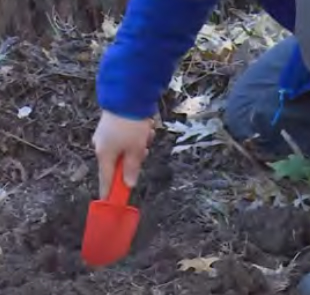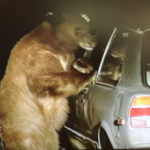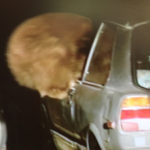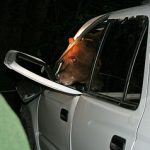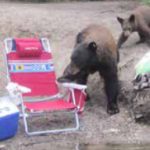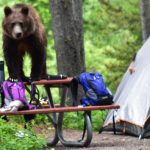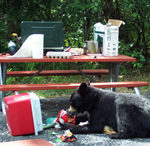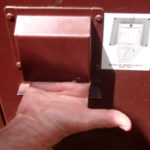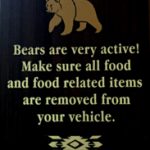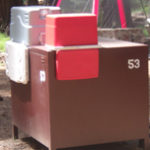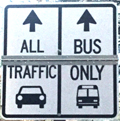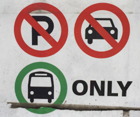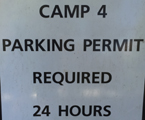GORP stands for “good old raisins and peanuts.” The first ones I remember from Girl Scout backpacking added chocolate. Stores sell various mixes, often at much higher cost than creating your own custom mix(es).
For my own snacking, and for no-cook backpacking meals, I like to carry various ingredients separately and mix as the mood or tastebuds or dining companions or scenery/weather dictates. (Although I will admit that anything sharing a bear-resistant food can or just a large plastic bag for days (even if the separate ingredients are double-bagged) will all smell and taste somewhat like all contents of the other baggies.)
Invent your own mix. Most people like a mix with something nutty/crunchy, something sweet and something salty. Do plan a taste test before hand of any new ingredients you are considering.
You’ll need to look to health food stores or grocery baking sections for some of the following. Trader Joe’s has a large selection of dried fruit, nuts and seeds.
Don’t limit your dried fruit to just raisins and apricots. (Some of the following suggestions may only be available freeze-dried, not simply dried.) You might want to buy these chopped or cut them into bite-sized pieces at home. Taste test some tropical fruit mix, cranberries, bananas, blueberries, tart cherries, sweet cherries, carrots, yogurt-covered raisins, berries, pineapple, papaya, guava, soft or crunchy apples.
– – – – – – – – – – – – – – – – – – – – – – – – – – – – – – – – – – – – – – – – – – – – – – – – – – – – – – – – – –
Avoid salt tablets, as they can irritate your stomach and cause nausea and/or vomiting, can raise blood pressure, cause stomach ulcers, and seriously affect people with heart disease.
–but a few salty snacks are a good idea to replenish salt after sweating.
Some people have needed to be rescued when they failed to include salty snacks in their diet, hiked a lot, got very hot and sweated a lot (sweating is your body’s number one way to to cool down), then could no longer sweat because they did not have enough salt to produce sweat, and were unable to even walk, and were starting to die from the heat.
Lack of salty foods can be as dangerous as dehydration. The park service often warns hikers:
“Avoid becoming dehydrated or experiencing heat exhaustion. Drink plenty and drink often; pace yourself; rest in the shade; eat salty snacks.”
“Replace sodium lost through sweat by supplementing your water intake frequently with salty, easily digested snacks, such as trail mix or nuts” is recommended.
For winter, Yosemite National Park says: “Carry and eat high-energy food.
Your body burns a lot of calories keeping you warm, so make sure you don’t run out of fuel. . .
Drink plenty of water (and carry extra).
Dry winter air means you need more water to stay hydrated. Don’t forget to drink because it’s cold out.”
– – – – – – – – – – – – – – – – – – – – – – – – – – – – – – – – – – – – – – – – – – – – – – – – – – – – – – – – – –
For the salty/crunchy/nutty part : (roasted, dry-roasted, raw or smoked) almonds, cashews, peanuts, pine nuts, walnuts, sunflower seeds, pistacio nuts, sunflower seeds or kernals, pumpkin seeds, walnuts, macadamia nuts, corn nuts, beer nuts, soy nuts, Wheat Chex cereal, Goldfish cheese crackers or pretzels, Cheerios or Honey Nut Cherrios, granola, corn chips, pretzel nuggets, Chex Party Mix, wasabi peas, rice crackers, spicy sesame sticks, garlic/cheese croutons.
Would halves of walnuts be better than chopped up?
For the sweet part (chocolate is a food group and yes, some kinds are more likely to melt, even if kept in the center coolest part of your pack) white or dark chocolate, M&Ms, candy corn, jellybeans, vanilla wafers, flaked coconut, chocolate-covered coffee beans, sugar-coated (or not) rice cereal, Raisinettes, Reese’s Pieces, red or black licorice, baking style semisweet chocolate chips or butterscotch chips, peppermints, toffee peanuts, hard candy.
I’ve been known to pack crackers for snacks in a small box so they don’t crunch into bits.
Small cloth drawstring bags can hold plastic baggies of snack or other food items and protect the plastic from wearing out too soon.
– – – – – – – – – – – – – – – – – – – – – – – – – – – – – – – – – – – – – – – – – – – – – – – – – – – – – – – – – –
Consider this if you want to go to the top of a peak. You might not want to bring a stove at all. If you spill some boiling water on your hand, for example, you won’t have enough cold water to pour over the burn to stop the burning and ease the pain. You can get by just fine (or even be somewhat gourmet) with snacks and cold food.
– – – – – – – – – – – – – – – – – – – – – – – – – – – – – – – – – – – – – – – – – – – – – – – – – – – – – – – – – –
Crackers and toppings.
Peanut butter (with or without jelly) may leak from squeeze tubes, so put it in a baggie in a plastic container. Or bring pre-made, pre-packaged cheese crackers with peanut butter.
Monterey jack cheese, gouda or cheddar keep well, especially in the center of your pack insulated from heat. The cheese will “weep” (sharper cheeses will almost melt) but will last long enough for a short trip. Individually wrapped string cheese or cheddar cheese snack sticks might hold up longer than a block of cheese you slice from. Brie will not hold up.
Tiny cans of tuna in oil (not in water; you’ll want the calories), deviled ham, sardines in mustard.
Salami or beef logs, double bagged and kept from heat. (Only the brands that do not require refrigeration.)
Beef jerky.
Other fresh food will also keep for a day or two, like flour tortillas, pita bread, carrots, tomatoes, and cucumber if you don’t mind the weight.
Snack bars, athlete’s bars, popcorn, brownies and cookies. Be prepared for crumbled cookies or pack only hard ones.
You can premix lemonade powder/Tang/Koolaid with half the sugar. Mix drink mixes (athletes’ drink mixes, Tang, or Koolaid) in your cup, not your water bottle, or the bottle will smell like food and you won’t be able to keep it in your tent at night without risking a visit by a bear or raccoon.
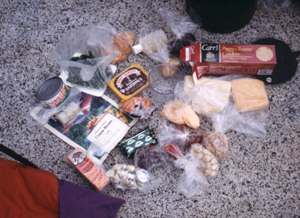
When you are about to leave, check your campsite and lunch stop for microtrash
——look for bandages, twist ties, fruit peels, bits of wrappers, stray potato chips, torn corners of candy bar wrappers and power bars, plastic bottle caps, bits of G.O.R.P. etc. and maybe even pick up what others have left behind.
How to use (fit things in) a backpacker’s (bear-resistant-or-even-bear-proof-if-you-use-it-properly) food storage container.
http://sierrawild.gov/bears/how-pack-bear-can has this on it’s backpacking food list: “Backcountry Food Suggestions: Trail mix, String cheese, Jerky, Tortillas, pita bread, Dried fruit, Nutrition/energy bars, Peanut butter , Salami and sliced meats, Powdered milk, Granola, Nuts, Instant coffee and tea, Hot chocolate, Candy, Spaghetti, flat pasta, Mac and cheese, Burritos (dehydrated beans, rice, cheese), Soups, Oatmeal, Tuna packets, “Tasty Bite” (Indian food packs), Fresh veggies (for the first few nights), Freeze-dried meals, Condiment packets , Chocolate,
More chocolate,
Consider chocolate.”
Enhance your hike by reading:
The day hike gear section at Camping equipment checklist
Thunderstorm and lightning safety includes the answer to the question: Why can’t you swim during a lightning storm? A strike on a lake doesn’t kill all the fish in the lake.
To truly be able to leave no trace and follow backcountry rules about camping the proper distance from a lake or digging your personal latrine hole the proper distance from water, etc., you will need to know how far 100 or 200 feet is.
Lay out a tape measure at home for 100 feet and walk it and count your paces.
How to poop in the woods has all the details.
Potato chips make great fire starters as well as providing the salt you need to replenish sweat while hiking. On a winter snow camp trip, potato chips won the fire starters experiment in competition against dryer lint, dryer lint with candle wax drips (which did quite well), Fritos (which did not do at all well), Cheetos and two flavors of Doritos:
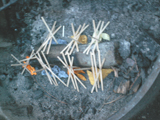

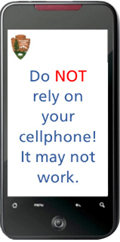 Cell phones in the wilderness has advice on how/when to use a cell phone to contact 911 in the wilderness and a warning about interference between cell phones, iPods and avalanche beacons.
Cell phones in the wilderness has advice on how/when to use a cell phone to contact 911 in the wilderness and a warning about interference between cell phones, iPods and avalanche beacons.
 You can’t always expect a helicopter rescue
You can’t always expect a helicopter rescue
Can a person who is prescribed an epi-pen risk going into the wilderness? and some sting prevention notes are at: Anaphylaxis quick facts
Hiking Advice has hot weather hiking advice, hiking logistics and the answer to the question: When is the best time of day to cross a mountain stream?
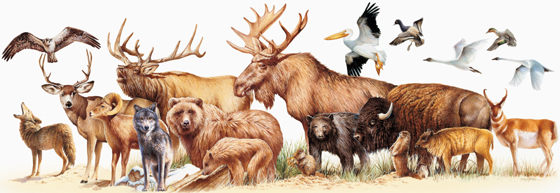 Rocky Mountain mammal size comparisons has photos and comparisons of beavers, squirrels, pika, marmot, elk, moose, bison, fox, coyote, wolf, golden-mantled ground squirrel, chipmunk, Red Squirrel (also known as) Chickaree, Unita Ground squirrels, bobcat, lynx, mountain lion (cougar), pine marten, mountain goats, bighorn sheep, pronghorn, grizzly and black bears.
Rocky Mountain mammal size comparisons has photos and comparisons of beavers, squirrels, pika, marmot, elk, moose, bison, fox, coyote, wolf, golden-mantled ground squirrel, chipmunk, Red Squirrel (also known as) Chickaree, Unita Ground squirrels, bobcat, lynx, mountain lion (cougar), pine marten, mountain goats, bighorn sheep, pronghorn, grizzly and black bears.

Camping solutions for women has tips for and answers typical questions from first-time women campers, including the question: Can menstruating women camp or backpack around bears? (Yes.)
Enhance your drive on your adventure: Road trip advice and etiquette
At bears you will find:
links to general info about bears,
then practicalities of camping and backpacking around bears, (Food Storage , what to do if you see a bear, how bears get into cars, info for backpackers) and lots of stories about bears getting into cars, tents, camps, etc., mostly geared towards De Anza College Outdoor Club trips around bears in California (especially Yosemite National Park) and Grand Teton National Park.
And the answer to the question:
Why don’t the rangers just move the problem bears?
and the question:
How can I keep a bear out of my campsite?
(You can’t, but you can almost always keep it out of your food.)


Using a campsite food storage locker, gives you ideas on how to use a metal campsite food storage locker, including some logistics on sharing one in a large group.
At Have more fun camping you can learn how to build campfires that don’t smoke too much, how to pack an ice chest, do dishes in camp and lots more.
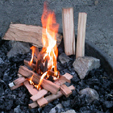
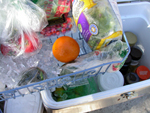
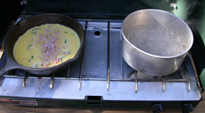
– – – – – – – – – – – – – – – – – – – – – – – – – – – – – – – – – – –
Drivers in Yosemite National Park should note that there have been sections of road in Yosemite Valley, part of the year, with two lanes (usually) in the same direction, with the right lane ONLY for the free shuttle buses, ambulances, ski bus, commercial vehicles with ten or more passengers. The NPS says: “The bus lane ensures emergency vehicles can respond to incidents when traffic is backed up and provides preference for mass transit.”
Parking and traffic jams in Yosemite valley tips and tricks has the above advice, with maps of each of the three major day-use parking lots, with advice to help you NOT get a Yosemite National Park traffic or parking ticket, and not contribute to preventable traffic backups. And some details of where you can’t park in Yosemite, or can’t park without a permit.
– – – – – – – – – – – – – – – – – – – – – – – – – – – – – – – – – – –
